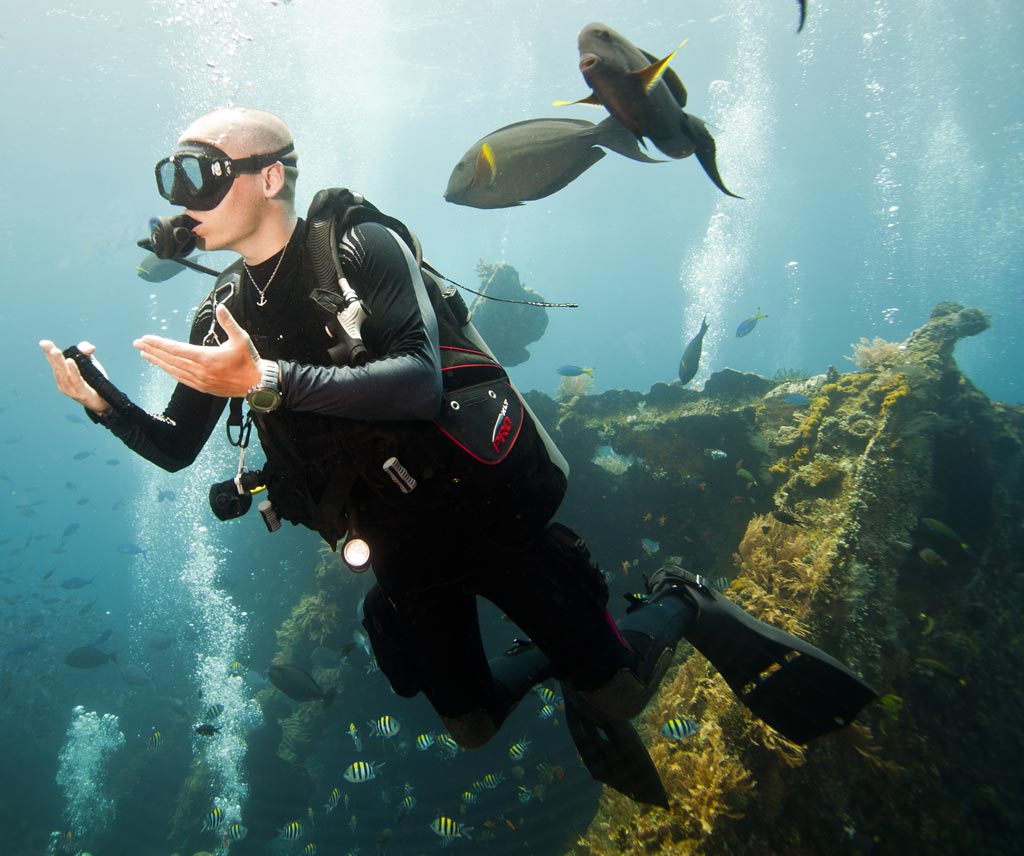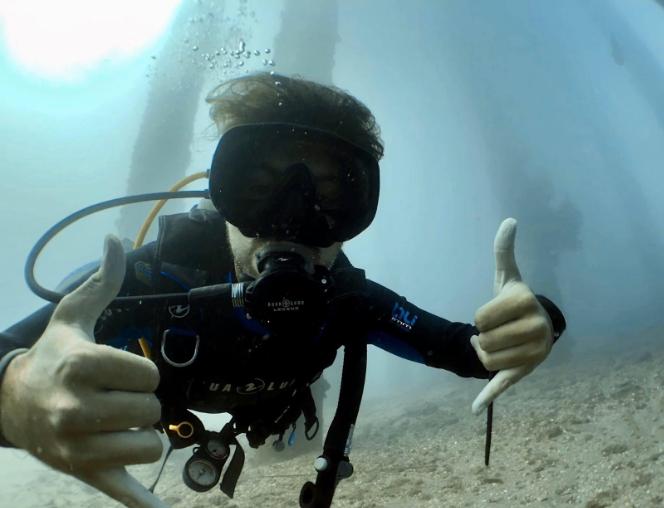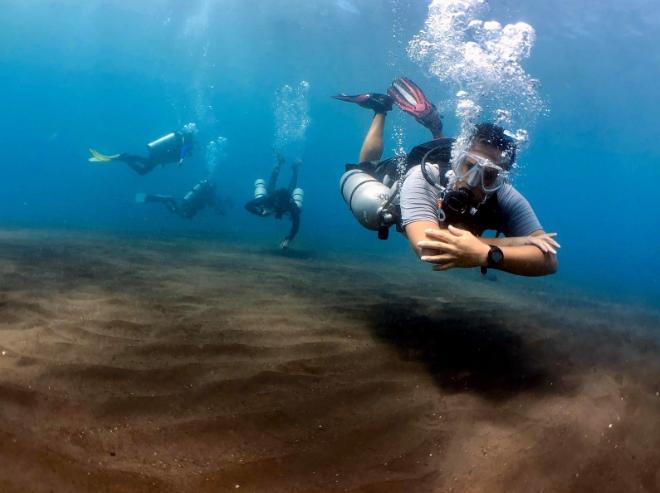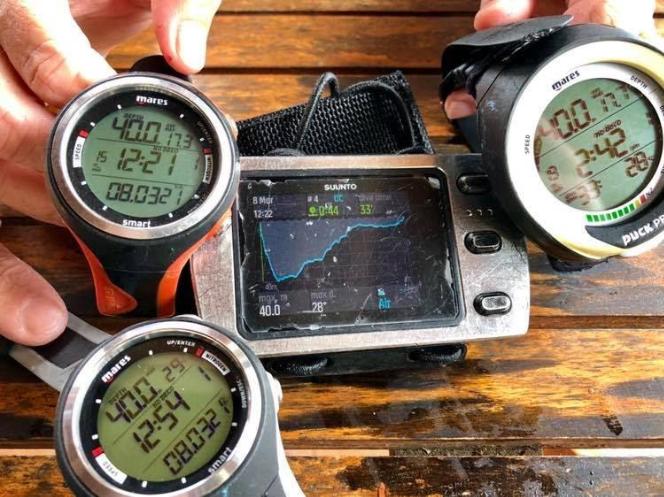Skill demonstration – how to demonstrate CESA
Today we will look at a skill that is useful for your PADI Divemaster or PADI IDC course, as it is part of the skill circuit that you are required to complete for both of these courses. Getting comfortable with the skills require some practice and also to understand the intent of the skill: what it is meant to explain or make our students understand about diving?

CESA (Controlled Emergency Swimming Ascent) is one of the skills that most people find quite difficult to master, so let’s look at the steps of it and a few tricks to make it easier. In confined water, CESA has to be performed horizontally for a distance of at least 9 meters.
To make your demonstration look smooth, follow these steps:
- Instruct your students to watch you and give them the skill signal
- First step is to be neutrally buoyant, so add a little bit of air into your BCD until you are
- Second step is to look ahead, opening your airway as you do so. Extend both arms, left arm on the LPI deflator in order to be able to vent air, right arm extended in front of you to protect your head
- Show your students you are taking a few deep breaths and when ready, start swimming at a normal pace horizontally while continuously exhaling
- You will need to emit a continuous sound, so you can point at your ear to indicate this to your students, as well as using your right hand to show you are exhaling the entire time
When demonstrating the skill, you do not have to swim for the entire distance, however, it is a very good idea to practice this skill for yourself until you can do it in a comfortable way!
One thing that Divemaster and IDC candidates usually find tricky is to be able to exhale for the entire time, so practice your breath control and your pace until you get comfortable. Another part that can prove a bit tricky is to maintain neutral buoyancy, as you are exhaling and emptying your lungs as you go. You need to have enough air in your BCD in order to keep yourself off the bottom, but not too much so you don’t breach the surface!
During your PADI Divemaster course or your Instructor course you will practice this skill and hopefully, these few tips will help you master it!



